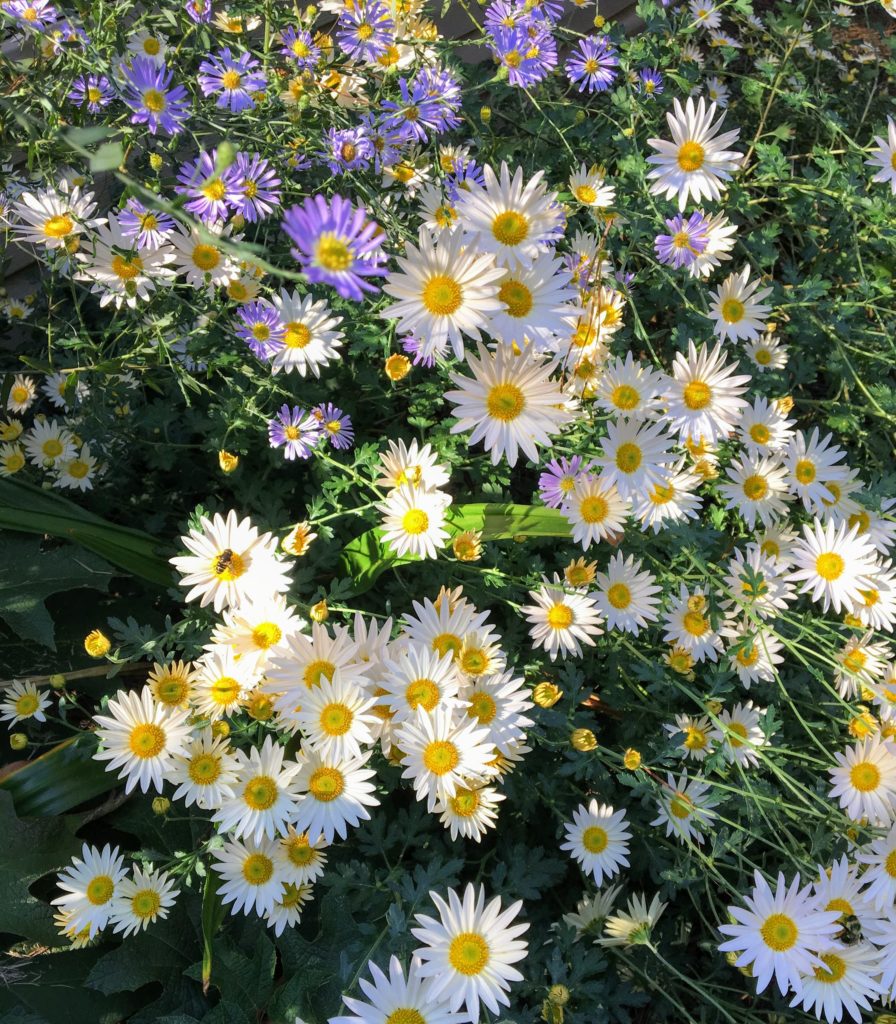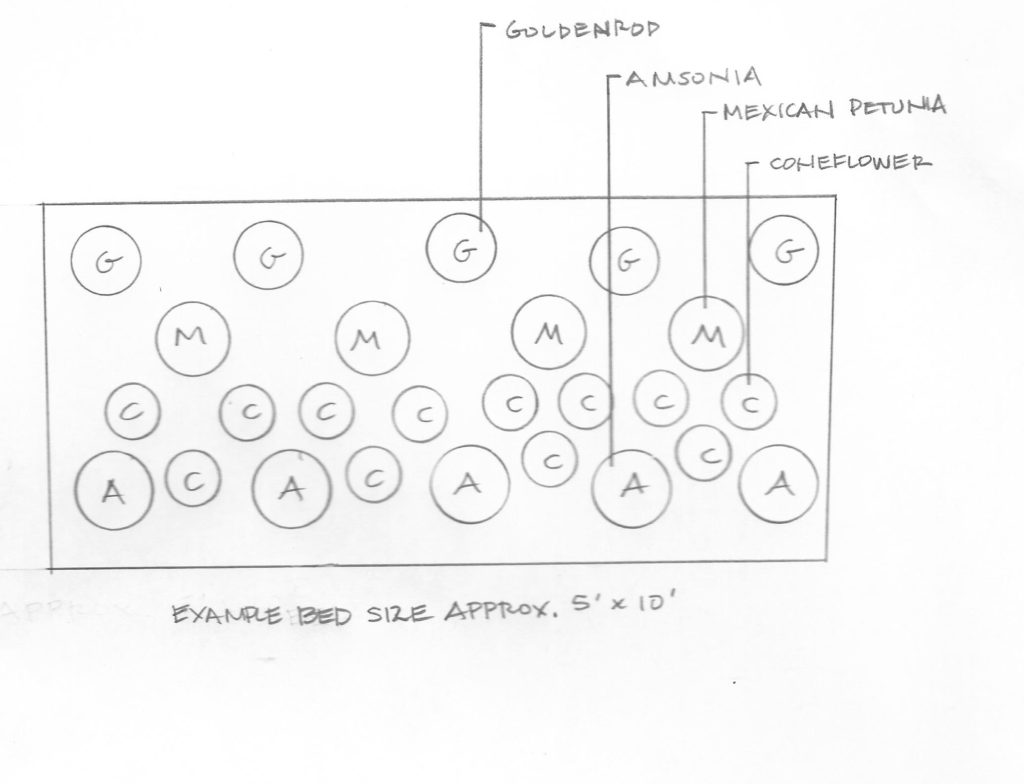
I have a confession to make: I don’t like gardening in late July and August. Allow me to clarify. I love to see what is happening in my Georgia garden in late summer, but I don’t want to work in it, and by work I mean any task that leaves me soaked with sweat, and covered in clay. The most I can expect out of my late summer self is some leisurely flower deadheading while the bees buzz around me, and perhaps a bit of weeding after a rainstorm, when the soil is soft. To keep my garden humming along while I’m looking forward to the cooler days of September, I use combinations of tough perennials with a very long season of bloom (for example coneflowers) and those that peak later in the season (such as asters and Japanese anemones).
Gardeners in the North bask in the sunshine of July and August, knowing that all that delicious warmth will surely fade away in September. In the South, our warm weather often arrives in April and is likely to hang on through October. It is not uncommon for the South to experience weeks of drought and temperatures in the mid-nineties through the late summer months, but there is an upside to all of that perspiration.
Our long southern growing season allows us to plant Japanese anemones that begin to bloom in early August and keep right on going until well into November. September and October bring perennial chrysanthemums with clouds of daisy-like flowers that look beautiful combined with asters. Exotic toad lilies make charming companions for shade-loving plants that peaked earlier in the season, such as hostas and ferns.
Here are a few more ideas to add beauty to your southern garden from late summer into autumn:
Asters and Chrysanthemums
Plant Aster x ‘Raydon’s Favorite’ at the back of a bed in full sun, with the Chrysanthemum ‘Single Apricot’ at the front. Blue asters form a cool backdrop for the soft apricot chrysanthemums. These two easy-to-grow perennials need sun and well-drained soil, with regular moisture, but both are quite forgiving, and won’t typically suffer during a dry spell. Both asters and chrysanthemums will benefit from what the British like to call the “Chelsea chop”, which means that in early summer, you can reduce the size of each plant by one-third to one-half. This will give you a fuller-looking plant by late summer. Chrysanthemums will reach a height of approximately 20 inches, and asters will reach up to 48 inches, so by reducing the size of the plants earlier in the season, you’ll have less problems with plants flopping over when they are at their peak.
Toad lilies and Japanese Anemones
Japanese anemones are one of my favorite plants of the late summer season, and in this design idea, I’ve combined them with toad lilies (tricyrtis), both which prefer rich, moist soil and part-shade (morning sun and afternoon shade in the South). I like the idea of mixing these plant types together, rather than placing them one in front of the other, because I like the surprise of delicate toad lily blooms on arching stems, pushing up through the foliage of the anemones. Try the anemone ‘Wild Swan’, which blooms from June until October in the South, reaching a height of 16 to 18 inches. It has elegant white flowers with lavender blue on the backs of the outer petals. Tricyrtis ‘Seiryu’ has pale blue flowers, with white centers and purple speckles, and will reach around 20 inches in height.
Coneflowers and Salvias
I often use coneflowers in my designs because they are garden workhorses. They attract pollinators, are fairly drought-tolerant when established, shrug off our southern heat and humidity, and bloom for months from late spring into fall. Cultivars come in a wide range of colors, but I’m fond of one named ‘Echo Sunrise’, with light yellow cones and citron yellow blooms. As a companion plant, try Salvia x ‘Mystic Spires’, another tough perennial with rich blue flower spikes appearing from May into November. Both will grow to around two feet in height by the end of the season.
Mexican Petunias, Amsonias, Coneflowers and Goldenrods
I love the combination of textures and colors in this layered design idea. First, plant several goldenrods (such as Solidago ‘Fireworks’) at the back of a garden bed, allowing a minimum of five feet of depth to allow for growth. In front of the goldenrods, plant a few Mexican petunias (Ruellia ‘Purple Showers). Next, plant groupings of the rich orange coneflower ‘Sundown’, and finally, plant Hubricht’s amsonia, in groups of three, across the front of the bed. This combination will peak in late summer, with pops of orange, violet-blue and gold, with the feathery green foliage of the amsonia providing extra texture and movement. While the amsonia has delicate blue spring blooms, I am crazy about the foliage of this plant.
Space each of your plants according to the information listed on the plant tag, but in general, most of these selections can be planted 15 inches on center. (Measure 15 inches from the center of one plant to the center of the adjacent plant). The goldenrods can be planted a bit further apart, to allow for growth over the next few years. The coneflowers, Mexican petunias, and amsonias will reach a height of around two feet, with the goldenrods slightly taller, reaching 3-4 feet.
I’ve included a rough sketch below to demonstrate one way to place the selected plants in a bed measuring approximately 5 x 10 feet in size.
Happy planting!
